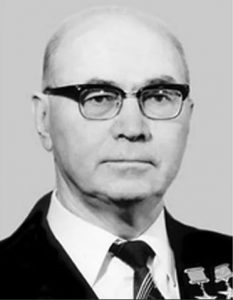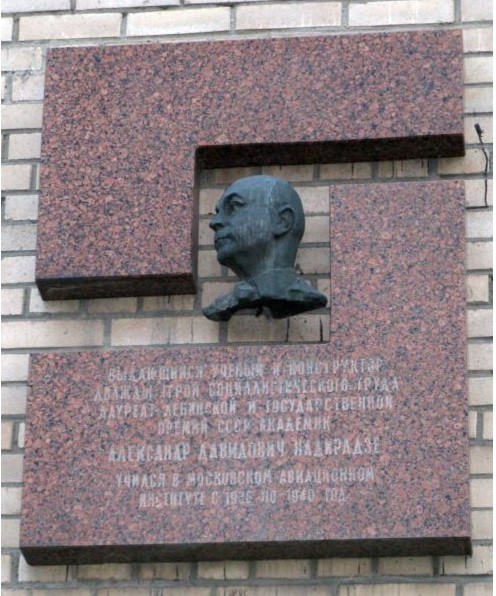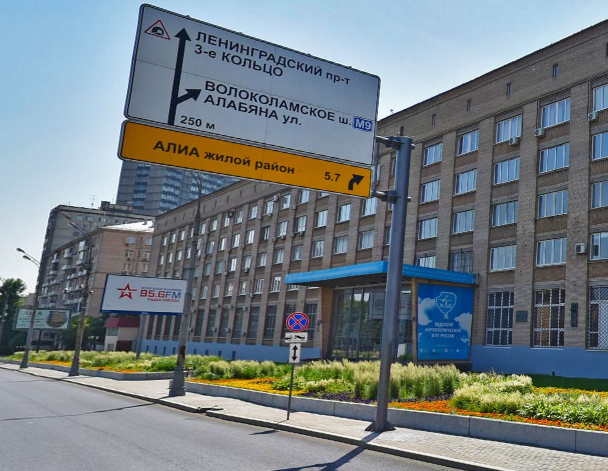Alexander Davidovich
Nadiradze
1914-1987

Alexander Davidovich Nadiradze was the Director and chief designer of the Moscow Institute of Thermal Engineering of the Ministry of Defence Industry of the USSR, Academician of the USSR Academy of Sciences, Hero of Socialist Labor, author of more than 100 scientific papers and 220 inventions. He was born on August 20 in the city of Gori, the Tiflis province (now Georgia) in the family of a teacher. In 1936, after graduating from Transcaucasian Industrial Institute, he moved to Moscow and entered Sergo Ordzhonikidze Moscow Aviation Institute (MAI). Since 1938, he also worked at Central Aerohydrodynamic Institute (TsAGI) as an engineer, then as a group leader. He was engaged in theoretical, experimental and scientific research of an aircraft take-off and landing device based on the principle of an air cushion. A.D. Nadiradze’s hovercraft landing gear was installed on the UT-2N aircraft. In 1941, he was appointed as a chief designer for the retractable landing gear Design Bureau of the Moscow Plant No. 22 named after S.P. Gorbunov. At the end of 1941, he began research on rocket technology. During the Great Patriotic War, he developed five variants of anti-tank shells, one of which had satisfactory characteristics. In 1945, A.D. Nadiradze organized and was appointed as the Chief Designer and Head of the Design Bureau at the Faculty of Jet Weapons of the Moscow Mechanical Institute of the People’s Commissariat of Ammunition. He combined the management of the Design Bureau and pilot production with lectures on the design of missiles and launchers. He conducted research work on two-stage rockets and turbojet projectiles. In 1948 by the decree of the Council of Ministers of the USSR, the Design Bureau of Moscow Mechanical Institute was transferred to the KB-2 of the Ministry of Agriculture. A.D. Nadiradze headed the unit where the development of unguided anti-aircraft missiles and anti-tank rockets was carried out. Since 1950, he developed the Strizh anti-aircraft projectile. In 1951, the KB-2 became a part of the GSNII-642 MSHM, where several design bureaus for the development of cruise and powder missiles, radio-controlled and homing bombs were united. In 1953, A.D. Nadiradze headed the work on the “Raven” system. The accumulated experience was used in the creation of the world’s first high-altitude research meteorological rocket, the development of which began in 1949 under the terms of reference of the Central Aerological Observatory of the Hydrometeorological Service of the USSR (the Dolgoprudny city). The rocket was intended to deliver measuring equipment to the upper atmosphere. In 1951, with the participation of the observatory staff, the first Soviet meteorological rocket MR-1, created by A.D. Nadiradze, was launched. October 15, 1951 A.D. Nadiradze was entrusted with the development of the Chaika aviation complex with the UB-2000F radio-controlled high explosive bomb. The tests were successfully completed at the end of 1955. On December 1 of the same year, the complex with an aerial bomb was put into service. At the end of 1957, the Moscow GSNII-642 was merged with V.N. Chelomey’s Reutovsky OKB-52. By decision of the Government, the Ministry of Defence of the USSR organized a competition for the best project of a mobile intercontinental ballistic missile (ICBM). The competition was won by the team of A.D. Nadiradze. On March 6, 1966 Research Institute-1 of the Ministry of Defence Industry was entrusted with the development of a solid-fuel ICBM for a mobile ground complex. The project was given the name “Temp-20”. On March 14, 1972, “Temp-20” entered the tests, which took place at the State test Site of the RVSN “Plesetsk” (the Arkhangelsk region) and were completed in December 1974. On February 21, 1976, two Temp-20 missile regiments in the area of “Plesetsk” they started combat duty. In 1971, the development of the Pioneer complex began at the A.D. Nadiradze Design Bureau. Flight tests were exceptionally successful and ended on January 9, 1976 on March 11, 1976. The Pioneer missile system was put into service. By the Decree of the Presidium of the Supreme Soviet of the USSR (“closed”) dated September 9, 1976, Alexander Davidovich Nadiradze was awarded the title of the Hero of Socialist Labor with the award of the Order of Lenin and the gold medal “Hammer and Sickle”.
Address: Moscow, Volokolamsk highway, 4, building 7

